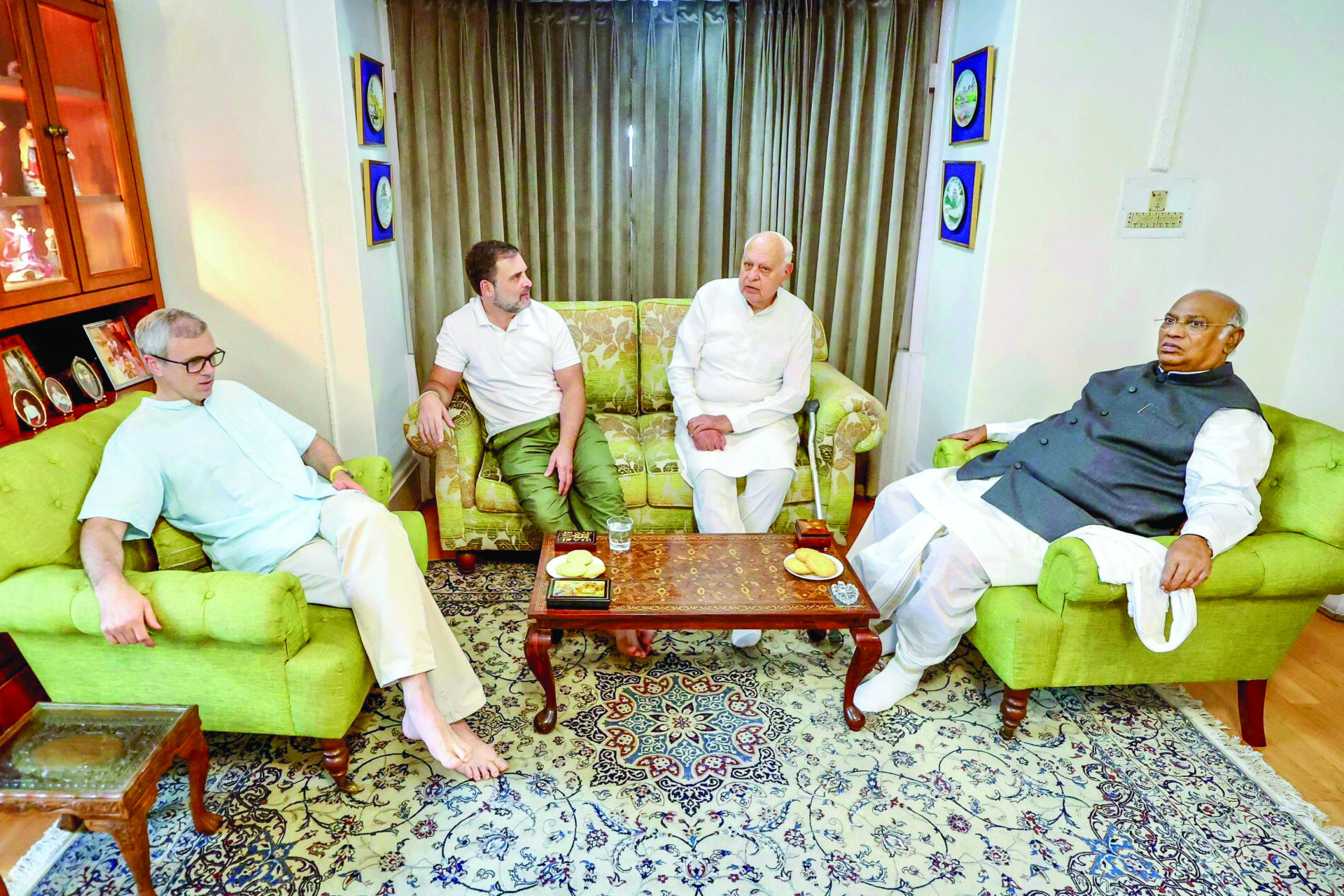Vote shares of the major parties clearly suggest another hung Assembly. To add to the ‘confusion’, there are a host of smaller regional parties.
Assembly elections in Jammu & Kashmir will be held soon after a gap of ten long years. Back in 2014, the three regions of Ladakh, Jammu and Kashmir constituted the state of J&K. But that state of affairs
And it is almost inevitable that such a situation could arise. There is every possibility of a 2014 like situation where the elections resulted in a hung Assembly with no party coming anywhere close to the majority mark of 46 seats. In the event, a very unlikely and strange alliance government was formed by the PDP led by the late Mufti Mohammad Sayeed and the BJP. In media discourse, the BJP is usually described as a Hindutva based nationalist party while the PDP leans towards Islamism and is often perceived to be advocating soft separatism. The alliance was a disaster, no matter how much spin has been given to justify it. There is every chance of a similarly chaotic government taking shape after this round of Assembly elections.
Let’s take a look at the arithmetic. After the delimitation exercise, the Jammu region has 43 seats while the Kashmir valley has 47 seats. For the first time since 1947, J&K will have seven and nine seats respectively reserved for Scheduled Castes and Tribes. Ladakh, of course, is now a separate UT. In 2014, the Assembly was well and truly hung. The PDP won 28 seats, the BJP 25, the Farooq/Omar Abdullah-led NC won 15 and the Congress won 12.
Prior to that the NC and the Congress had somehow managed to run a coalition government with a combined tally of 45 seats. There was no question of any alliance between arch rivals NC and PDP. There was no question of an alliance between the Congress and the BJP. In any case, such theoretical alliances fell well short of the majority mark of 46. Almost inevitably, the BJP and PDP with a combined seat tally of 53 formed a post poll alliance and a government. Will something similar happen this time around?
Vote shares of the major parties clearly suggest another hung Assembly. To add to the “confusion”, there are a host of smaller regional parties that range from pro Article 370 abrogation to pro separation from India.
In the Lok Sabha elections, a separatist leader, Sheikh Abdul Rashid, popularly known as Engineer Rashid won the Baramulla seat as an independent candidate defeating PDP and NC heavyweights despite being in jail for allegedly subversive acts against the sovereignty of India. Many such parties and candidates are expected to win a number of seats in the forthcoming elections. While voters behave differently during Lok Sabha and Assembly elections, the results of the 2024 Lok Sabha elections do provide a glimpse of the things to come. The BJP gathered a vote share of 24.4%, the NC 22.3%, the Congress 19.4% and the PDP 8.5%. As of now, the PDP led by Mehbooba Mufti is a bit like the BSP led by Mayawati was in Uttar Pradesh in 2014: a declining force but still capable of winning a significant vote share. The most optimistic outcome in terms of stability would be a victory for the already declared alliance between the NC and the Congress. Together, they could gather more than 40% of the vote share. If there is a successful vote transfer between the two, the first past the post system could lead the alliance to more than 45 seats which is required for a majority.
But there are many ifs and buts in the equation and the presence of a plethora of smaller parties and independent candidates means that it would be very difficult to be certain of this alliance winning more than 45 seats. After all, despite being the oldest regional party with deep roots in both the Kashmir and Jammu regions, Omar Abdullah of the NC lost to the separatist leader Engineer Rashid from Baramulla in the Lok Sabha elections. Who knows how many candidates who openly or silently support some form or other of separatism will win this time around? It is all very well to keep saying that the abrogation of Article 370 has led to deeper integration with India. But it would be foolish to deny that separatist sentiments still exist in the valley.
Even if the NC-Congress alliance wins a majority and forms a relatively stable government, a clash with the Centre is inevitable. The NC has already released its manifesto for the Assembly elections and the primary declaration is that it will work for the restoration of Article 370 and Section 35 (A). It will not be surprising if that “new” government tables and passes a Bill to that effect. What impact it will have on the ground in the UT can only be guessed. The manifesto also speaks of diplomatic dialogue with Pakistan to solve the Kashmir “dispute”.
If J&K was a full-fledged state with the government having total control over the state police, there is little doubt that we would be back to the violently chaotic days of 2016 when the terrorist Burhan Wani was killed. Even without that, a “normal” Kashmir is difficult to envisage at the moment.
Yashwant Deshmukh is Founder & Editor in Chief of CVoter Foundation and Sutanu Guru is Executive Director.

